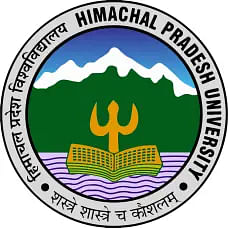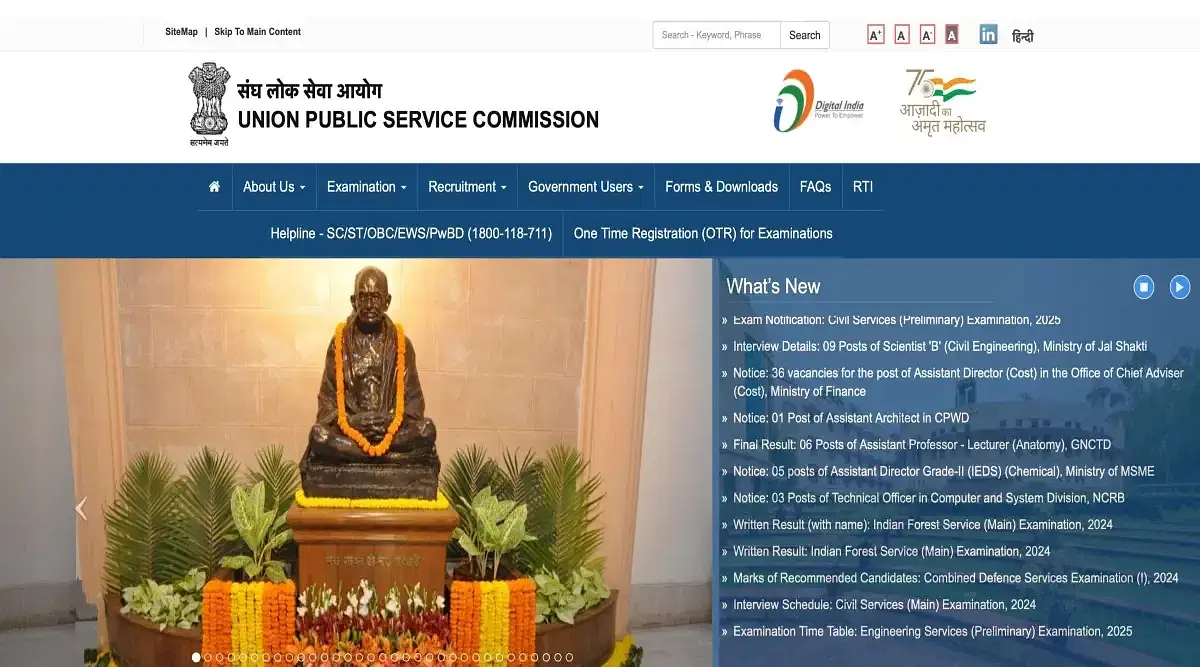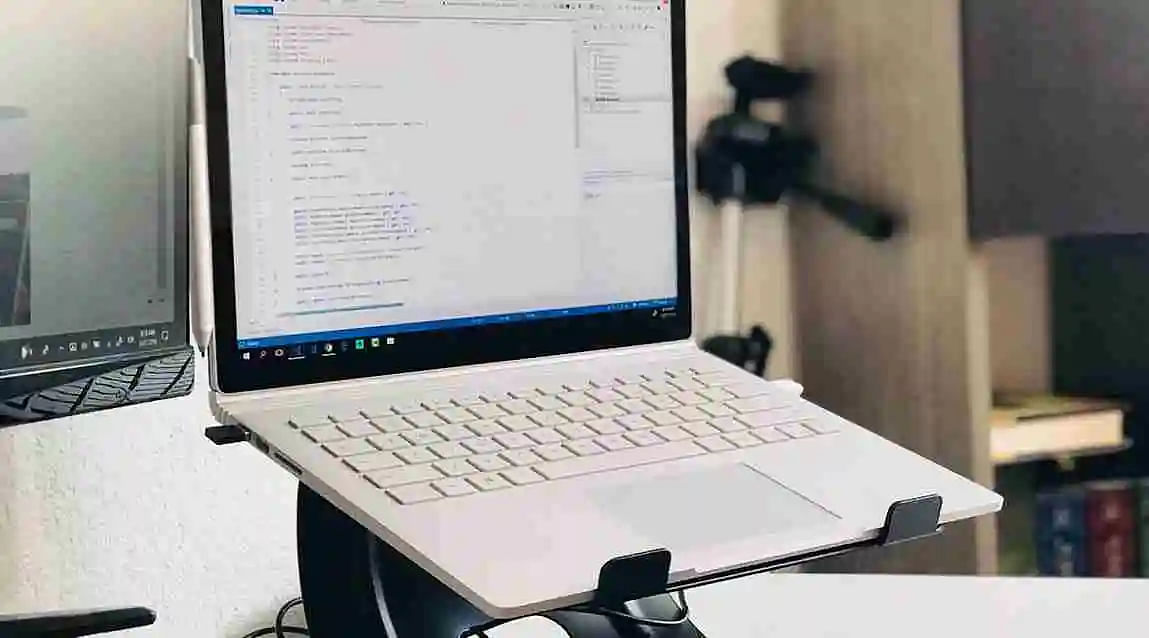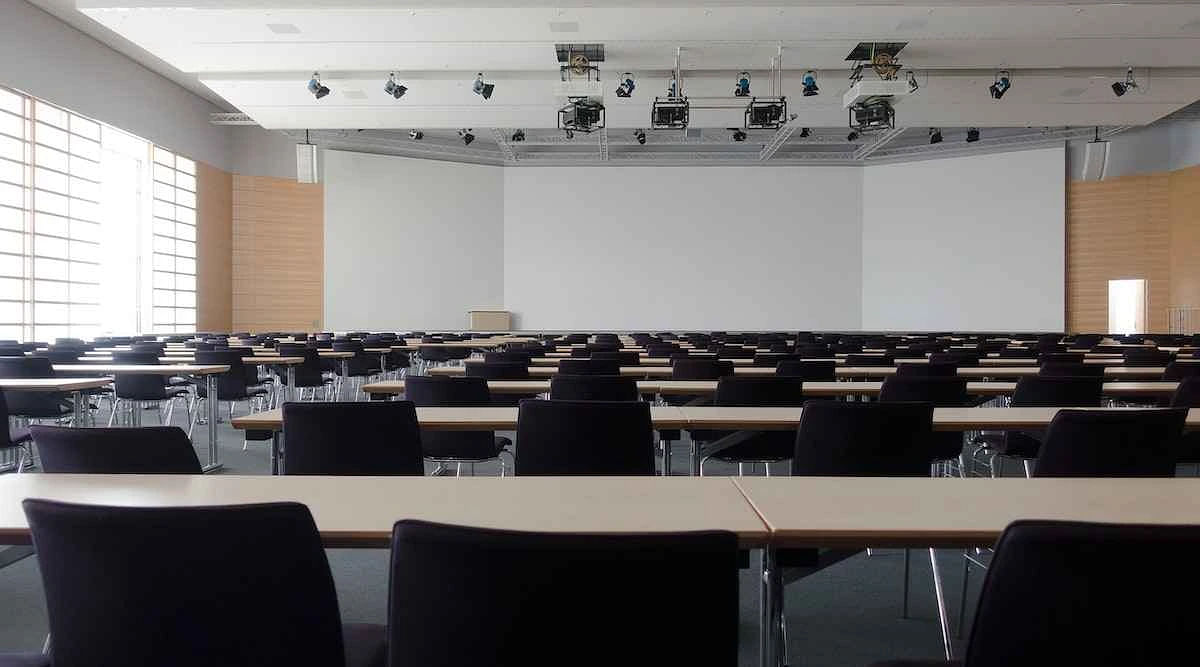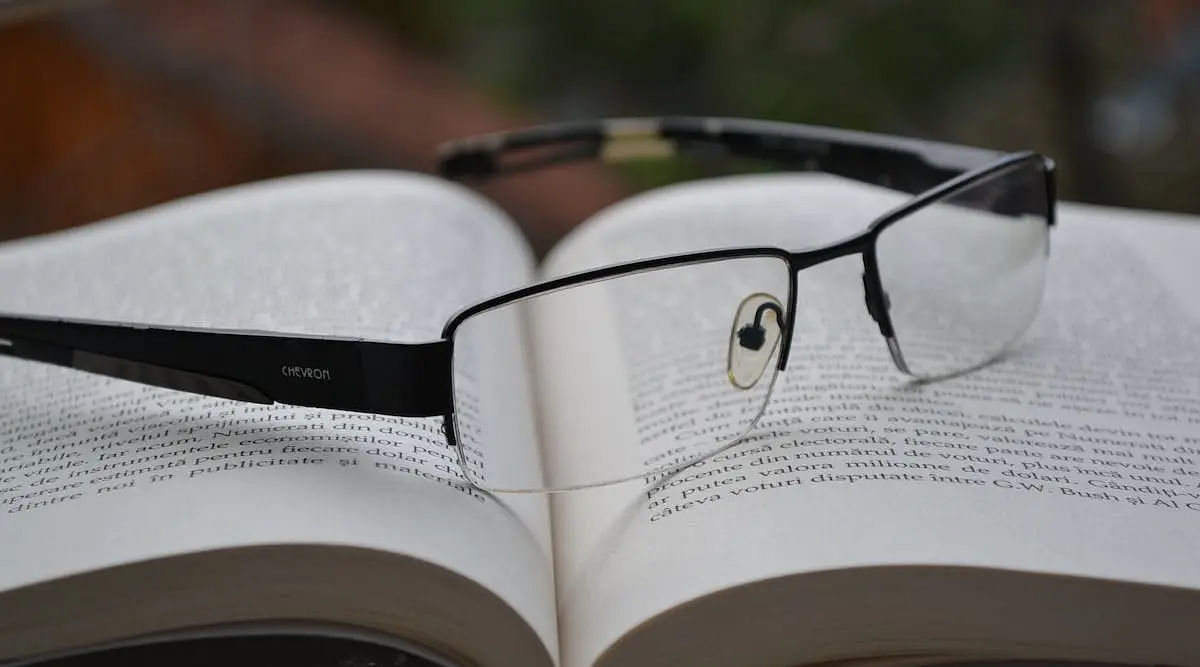Applicants need to be well prepared before attending the exam.
For prelims papers with Objective type questions, the duration is 2 hours and the maximum mark is 200.
EM Theory Electric and Magnetic Fields
-
Gauss’s Law and Amperes Law. Fields in dielectrics, conductors, and magnetic materials. Maxwell’s equations. Time-varying fields. Plane-Wave propagating in dielectric and conducting media. Transmission lines.
Electrical Materials
-
Band Theory, Conductors, Semiconductors and Insulators. Superconductivity. Insulators for electrical and electronic applications. Magnetic materials. Ferro and ferrimagnetism. Ceramics, Properties, and applications. Hall effect and its applications. Special semiconductors.
Electrical Circuits
Measurements and Instrumentation
-
Units and Standards. Error analysis, measurement of current, Voltage, power, Power-factor and energy. Indicating instruments. Measurement of resistance, inductance, capacitance, and frequency. Bridge measurements. Electronic measuring instruments. Digital Voltmeter and frequency counter. Transducers and their applications to the measurement of nonelectrical quantities like temperature, pressure, flow-rate displacement, acceleration, noise level etc. Data acquisition systems. A/D and D/A converters.
Control Systems
-
Mathematical modelling of physical systems. Block diagrams and signal flow graphs and their reduction. Time-domain and frequency domain analysis of a linear dynamical system. Errors for a different type of inputs and stability criteria for feedback systems. Stability analysis using Routh-Hurwitz array, Nyquist plot and Bode plot. Root locus and Nicols chart and the estimation of gain and phase margin. Basic concepts of compensator design. State variable matrix design. Sampled data system and performance of such a system with the samples in the error channel. Stability of sampled data system. Elements of non-linear control analysis. Control system components, electromechanical, hydraulic, pneumatic components.
UPSC IES/ESE 2023 Paper II Syllabus
Electrical Machines and Power Transformers
-
Magnetic Circuits - Analysis and Design of Power Transformers. Construction and testing. Equivalent circuits. Losses and efficiency. Regulation. Auto-transformer, 3-phase transformer. Parallel operation. Basic concepts in rotating machines. EMF, torque, basic machine types. Construction and operation, leakage losses and efficiency. D.C. Machines. Construction, Excitation methods. Circuit models. Armature reaction and commutation. Characteristics and performance analysis. Generators and motors. Starting and speed control. Testing, Losses, and efficiency. Synchronous Machines. Construction. Circuit model. Operating characteristics and performance analysis. Synchronous reactance. Efficiency. Voltage regulation. Salient-pole machine, Parallel operation. Hunting. Short circuit transients. Induction Machines. Construction. The principle of operation. Rotating fields. Characteristics and performance analysis. Determination of circuit model. Circle diagram. Starting and speed control. Fractional KW motors. Single-phase synchronous and induction motors.
Power systems
-
Types of Power Stations, Hydro, Thermal, and Nuclear Stations. Pumped storage plants. Economics and operating factors. Power transmission lines. Modelling and performance characteristics. Voltage control. Load flow studies. Optimal power system operation. Load frequency control. Symmetrical short circuit analysis. Z-Bus formulation. Symmetrical Components. Per Unit representation. Fault analysis. Transient and steady-state stability of power systems. Equal area criterion. Power system Transients. Power system Protection Circuit breakers. Relays. HVDC transmission.
Analog and Digital Electronics and Circuits
-
Semiconductor device physics, PN junctions and transistors, circuit models and parameters, FET, Zener, tunnel, Schottky, photodiodes and their applications, rectifier circuits, voltage regulators and multipliers, switching behaviour of diodes and transistors. Small signal amplifiers, biasing circuits, frequency response and improvement, multistage amplifiers and feedback amplifiers, D.C. amplifiers, coupling methods, push-pull amplifiers, operational amplifiers, wave shaping circuits. Multivibrators and flip-flops and their applications. Digital logic gate families, universal gates combinational circuits for arithmetic and logic operational, sequential logic circuits. Counters, registers, RAM and ROMs.
Microprocessors
Communication Systems
-
Types of modulation; AM, FM, and PM. Demodulators. Noise and bandwidth considerations. Digital communication systems. Pulse code modulation and demodulation. Elements of sound and vision broadcasting. Carrier communication. Frequency division and time division multiplexing, Telemetry system in power engineering.
Power Electronics
-
Power Semiconductor Devices. Thyristor. Power transistor, GTOs, and MOSFETs. Characteristics and operation. AC to DC Converters; 1-phase and 3-phase DC to DC Converters. AC regulators. Thyristor controlled reactors; switched capacitor networks. Inverters; single-phase and 3-phase. Pulse width modulation. Sinusoidal modulation with uniform sampling. Switched-mode power supplies.
UPSC IES/ESE 2023 Mechanical Engineering Syllabus
UPSC IES/ESE 2023 Paper I Syllabus
Thermodynamics, Cycles and IC Engines
-
Basic concepts, Open and Closed systems. Heat and work. Zeroth, First and Second Law, Application to non-Flow and Flow processors. Entropy, Availability, Irreversibility and Tds relations. Claperyron and real gas equations, Properties of ideal gases and vapours. Standard vapour, Gas power, and Refrigeration cycles.Two-stage compressor. C-I and S.I. Engines. Pre-ignition, Detonation and Diesel-knock, Fuel injection and Carburation, Supercharging. Turboprop and Rocket engines, Engine Cooling, Emission & Control, Flue gas analysis, Measurement of Calorific values. Conventional and Nuclear fuels, Elements of Nuclear power production.
Heat Transfer and Refrigeration and Air-conditioning
-
Modes of heat transfer. One dimensional steady and unsteady conduction. Composite slab and Equivalent Resistance. Heat dissipation from extended surfaces, Heat exchangers, Overall heat transfer coefficient, Empirical correlations for heat transfer in laminar and turbulent flows and for free and forced Convection, Thermal boundary layer over a flat plate. Fundamentals of diffusive and convective mass transfer, Black body and basic concepts in Radiation, Enclosure theory, Shape factor, Network analysis. Heat Pump and Refrigeration cycles and systems, Refrigerants. Condensers, Evaporates and Expansion devices, Psychrometry, Charts and application to air conditioning, Sensible heating and cooling, Effective temperature, comfort indices, Load calculations, Solar refrigerations, controls, Duct design.
Fluid Mechanics
-
Properties and classification of fluids, Manometry, forces on immersed surfaces, Center of pressure, Buoyancy, Elements of stability of floating bodies. Kinematics and Dynamics. Irrotational and incompressible. Inviscid flow. Velocity potential, Pressure field, and Forces on immersed bodies. Bernoulli’s equation, Fully developed flow through pipes, Pressure drop calculations, Measurement of flow rate and Pressure drop. Elements of boundary layer theory, Integral approach, Laminar and turbulent flows, Separations. Flow over Weirs and notches. Open channel flow, Hydraulic jump. Dimensionless numbers, Dimensional Analysis, Similitude, and modelling one-dimensional isentropic flow, Normal shock wave, Flow-through convergent-divergent ducts, Oblique shock-wave, Rayleigh and Fanno lines.
Fluid Machinery and Steam Generators
-
Performance, Operation, and control of hydraulic Pump and impulse a reaction Turbines, Specific speed, Classification. Energy transfer, Coupling, Power transmission, Steam generators Fire-tube and water-tube boilers. The flow of steam through Nozzles and Diffusers, Wetness, and condensation. Various types of steam and gas Turbines, Velocity diagrams. Partial admission. Reciprocating, Centrifugal, and axial flow Compressors, Multistage compression, the role of Mach Number, Reheat, Regeneration, Efficiency, Governance.
UPSC IES/ESE 2023 Paper II Syllabus
Theory of Machines
-
Kinematic and dynamic analysis of planar mechanisms. Cams. Gears and gear trains. Flywheels. Governors. Balancing of rigid rotors and field balancing. Balancing of single and multicylinder engines, Linear vibration analysis of mechanical systems. Critical speeds and whirling of shafts Automatic controls.
Machine Design
-
The design of Joints: cotters, keys, splines, welded joints, threaded fasteners, joints formed by interference fits. Design of friction drives: couplings and clutches, belt and chain drives, power screws. Design of Power transmission systems: gears and gear driveshaft and axle, wire ropes. Design of bearings: hydrodynamics bearings and rolling element bearings.
Strength of Materials
-
Stress and strain in two dimensions, Principal stresses, and strains, Mohr’s construction, linear elastic materials, isotropy and anisotropy, stress-strain relations, uniaxial loading, thermal stresses. Beams: Bending moment and shear force diagram, bending stresses and deflection of beams. Shear stress distribution. Torsion of shafts, helical springs. Combined stresses, thick-and think-walled pressure vessels. Struts and columns. Strain energy concepts and theories of failure.
Engineering Materials
-
Basic concepts on the structure of solids. Crystalline materials. Detects in crystalline materials. Alloys and binary phase diagrams. Structure and properties of common engineering materials. Heat treatment of steels. Plastics, Ceramics and composite materials. Common applications of various materials.
Production Engineering
-
Metal Forming: Basic Principles of forging, drawing and extrusion; High energy rate forming; Powder metallurgy. Metal Casting: Die casting, investment casting, Shall Moulding, Centrifugal Casting, Gating & Riser design; melting furnaces. Fabrication Processes: Principles of Gas, Arc, Shielded Arc Welding; Advanced Welding Processes, Weldability: Metallurgy of Welding. Metal Cutting: Turning, Methods of Screw Production, Drilling, Boring, Milling, Gear Manufacturing, Production of flat surfaces, Grinding & Finishing Processes. Computer Controlled Manufacturing Systems-CNC, DNC, FMS, Automation, and Robotics. Cutting Tools Materials, Tool Geometry, Mechanism of Tool Wear, Tool Life & Machinability; Measurement of cutting forces. Economics of Machining. Unconventional Machining Processes. Jigs and Fixtures. Fits and tolerances, Measurement of surface texture, Comparators Alignment tests and reconditioning of Machine Tools.
Industrial Engineering
-
Production Planning and Control: Forecasting - Moving average, exponential smoothing, Operations, scheduling; assembly line balancing, Product development, Break-even analysis, Capacity planning, PERT, and CPM. Control Operations: Inventory control ABC analysis, EOQ model, Materials requirement planning. Job design, Job standards, Work Measurement, Quality Management - Quality analysis and control. Operations Research: Linear Programming - Graphical and Simplex Methods, Transportation and assignment models. Single server queueing model.
Value Engineering: Value analysis for cost/value.
Elements of Computation
-
Computer Organisation, Flowcharting, Features of Common Computer Languages - FORTRAN, d Base III, Lotus 1-2-3, C and elementary Programming.
UPSC IES/ESE 2023 Civil Engineering Syllabus
UPSC IES/ESE 2023 Paper I Syllabus
Building Materials
- Timber: Different types and species of structural timber, density-moisture relationship, strength in different directions, defects, the influence of defects on permissible stress, preservation, dry and wet rots, codal provisions for design, plywood. Bricks: Types, Indian Standard classification, absorption, saturation factor, strength in masonry, the influence of mortar strength on masonry strength. Cement: Compounds of, different types, setting times, strength. Cement Mortar: Ingredients, proportions, water demand, mortars for plastering and masonry. Concrete: Importance of W/C Ratio, Strength, ingredients including admixtures, workability, testing for strength, elasticity, non-destructive testing, mix design methods.
Solid Mechanics
- Elastic constants, stress, plane stress, Mohr’s circle of stress, strains, plane strain, Mohr’s circle of strain, combined stress; Elastic theories of failure; Simple bending, shear; Torsion of circular and rectangular sections and simple members.
Structural Analysis
- Analysis of determinate structures - different methods including graphical methods. Analysis of indeterminate skeletal frames - moment distribution, slope deflection, stiffness and force methods, energy methods, Muller-Breslau principle, and application. Plastic analysis of indeterminate beams and simple frames - shape factors.
Design of Steel Structures
- Principles of working stress method. Design of connections, simple members, Built-up sections and frames, Design of Industrial roofs. Principles of ultimate load design. Design of simple members and frames.
Design of Concrete and Masonry Structures
- Limit state design for bending, shear, axial compression and combined forces. Codal provisions for slabs, beams, walls, and footings. Working stress method of design of R.C. members. Principles of prestressed concrete design, materials, methods of prestressing, losses. Design of simple members and determinate structures. Introductions to prestressing of indeterminate structures. Design of brick masonry as per I.S. Codes.
Construction Practice, Planning and Management
- Concreting Equipment: Weight Batcher, Mixer, vibrator, batching plant, concrete pump. Cranes, hoists, lifting equipment. Earthwork Equipment: Power shovel, hoe, dozer, dumper, trailers, and tractor, rollers, sheep foot rollers, pumps. Construction, Planning, and Management: Bar chart, linked bar chart, work-break-down structures, Activity - on - arrow diagrams. Critical path, probabilistic activity durations; Event-based networks. PERT network: Time-cost study, crashing; Resource allocation.
UPSC IES/ESE 2023 Paper II Syllabus Civil Engineering
Fluid Mechanics, Open Channel Flow, Pipe Flow
-
Fluid Properties, Pressure, Thrust, Buoyancy; Flow Kinematics; Integration of flow equations; Flow measurement; Relative motion; Moment of momentum; Viscosity, Boundary layer and control, Drag, Lift; Dimensional Analysis, Modelling; Cavitation; Flow oscillations; Momentum and Energy principles in Open channel flow, Flow controls, Hydraulic jump, Flow sections and properties; Normal flow, Gradually varied flow; Surges; Flow development and losses in pipe flow, Measurements; Siphons; Surges and Water hammer; Delivery of Power Pipe networks.
Hydraulic Machines and Hydropower
-
Centrifugal pumps, types, performance parameters, scaling, pumps in parallel; Reciprocating pumps, air vessels, performance parameters; Hydraulic ram; Hydraulic turbines, types, performance parameters, controls, choice; Powerhouse, classification, and layout, storage, poundage, control of supply.
Hydrology
- Hydrological cycle, precipitation, and related data analyses, PMP, unit and synthetic hydrographs; Evaporation and transpiration; Floods and their management, PMF; Streams and their gauging; River morphology; Routing of floods; Capacity of Reservoirs.
Water Resources Engineering
- Water resources of the globe: Multipurpose uses of Water: Soil-PlantWater relationships, irrigation systems, water demand assessment; Storages and their yields, groundwater yield and well hydraulics; Waterlogging, drainage design; Irrigation revenue; Design of rigid boundary canals, Lacey’s and Tractive force concepts in canal design, lining of canals; Sediment transport in canals; Non-Overflow and overflow sections of gravity dams and their design, Energy dissipators and tailwater rating; Design of headworks, distribution works, falls, cross-drainage works, outlets; River training.
UPSC IES/ESE 2023 Environmental Engineering
Water Supply Engineering
-
Sources of supply, yields, design of intakes and conductors; Estimation of demand; Water quality standards; Control of Water-borne diseases; Primary and secondary treatment, detailing and maintenance of treatment units; Conveyance of treatment units; Conveyance and distribution systems of treated water, leakages and control; Rural water supply; Institutional and industrial water supply.
Waste Water Engineering
-
Urban rainwater disposal; Systems of sewage collection and disposal; Design of sewers and sewerage systems; pumping; Characteristics of sewage and its treatment, Disposal of products of sewage treatment, streamflow rejuvenation Institutional and industrial sewage management; Plumbing Systems; Rural and semi-urban sanitation.
Solid Waste Management
Air and Noise Pollution and Ecology
Soil Mechanics
-
Properties of soil, classification and interrelationship; Compaction behaviour, methods of compaction and their choice; Permeability and seepage, flow nets, Inverted filters; Compressibility and consolidation; Shearing resistance, stresses, and failure; soil testing in laboratory and in-situ; Stress path and applications; Earth pressure theories, stress distribution in soil; soil exploration, samplers, load tests, penetration tests.
Foundation Engineering
-
Types of foundations, Selection criteria, bearing capacity, settlement, laboratory and field tests; Types of piles and their design and layout, Foundations on expansive soils, swelling and its prevention, a foundation on swelling soils.
Surveying
-
Classification of surveys, scales, accuracy; Measurement of distances - direct and indirect methods; optical and electronic devices; Measurement of directions, prismatic compass, local attraction; Theodolites - types; Measurement of elevations - Spirit and trigonometric levelling; Relief representation; Contours; Digital elevation modelling concept; Establishment of control by triangulation and traversing - measurements and adjustment of observations, computation of coordinates; Field astronomy, Concept of a global positioning system; Map preparation by plane tabling and by photogrammetry; Remote sensing concepts, map substitutes
Transportation Engineering
-
Planning of highway systems, alignment, and geometric design, horizontal and vertical curves, grade separation; Materials and construction methods for different surfaces and maintenance: Principles of pavement design; Drainage. Traffic surveys, Intersections, signalling: Mass transit systems, accessibility, networking. Tunnelling, alignment, methods of construction, disposal of muck, drainage, lighting and ventilation, traffic control, emergency management. Planning of railway systems, terminology, and designs, relating to gauge, track, controls, transits, rolling stock, tractive power, and track modernization; Maintenance; Appurtenant works; Containerisation. Harbours - layouts, shipping lanes, anchoring, location identification; Littoral transport with erosion and deposition; sounding methods; Dry and Wet docks, components and operational Tidal data and analyses. Airports - layout and orientation; Runway and taxiway design and drainage management; Zoning laws; Visual aids and air traffic control; Helipads, hangers, service equipment.






